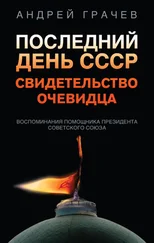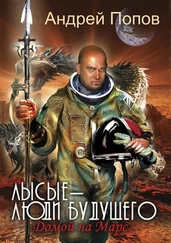Many nuclear things, big and small, were created for military reasons, and there even was no desire to use all that stuff for the intended purposes.
People became a little cleverer, a little more polite and civilized, and understood that hitting themselves with nuclear clubs was not right or humane.
They decided to use something from this nuclear arsenal for peaceful purposes.
There was no sense in constructing large, labor-consuming and expensive nuclear power stations, considering the huge territory of the USSR and the peculiarities of its climate. There were hundreds of thousands of rivers, but the construction of hydro-electric power stations is not that cheap…
Then they remembered about compact or portable low power nuclear devices. A project was conceived to create small, reliable, and the main thing – one hundred times cheaper nuclear power stations. It was planned to build such a station in practically each of the remote regions…After all, the country occupied 1/6 of the land; but the project was suspended…
The question of portability, weight and, the main thing, the weight of fuel was the most acute in space industry. It was the trend with the highest priority for the Soviet Union. The majority of the most talented scientists worked for the space. Solar batteries were cumbersome and produced little electricity, the first compact nuclear power facilities were developed and used for the satellites – for the only purpose of providing energy to the devices…
The work on the nuclear propulsion engine for rockets was finished back in 1981. The trial runs were mainly carried out on the same launch site where military atomic shells and bombs were tested – near Semipalatinsk.
The project was successful and almost complete, but… it was closed. There were a lot of reasons for that, but the main thing was connected with the start of the rocket from earth cosmodromes: due to a great amount of radiation emitted, a new launch pad or desk would have to be built for each new launch.
And problems with protection of the rocket’s living module seemed practically unresolvable back then…
The designer of MS 88 found a little different way to solve these problems.
The nuclear propulsion engine started as far from the Earth as possible, being the second or third stage engine of the spaceship. And it did not work directly, so its radiation background was just one and a half or two times higher than natural values.
Protection of the crew from such relatively low level of radiation was also simplified and was solved in three years. It took a couple more years for final breaking-in, fine tuning and trial. So in six years after closure of the first project, the second one was successfully completed. It is true that it had a lot of principal differences, but it was the same in essence.
The problem of energy and heat supply to the spaceship on the whole was successfully resolved. And the main thing, now there was an opportunity to use practically the whole volume and weight of the rocket for more important tasks…
Andrey was the KGB supervisor of this design office. First of all he was responsible for the project secrecy, and a little less for its successful final result.
The result was dimly shining behind the 50 cm partition of the energy compartment, transforming the energy of arms-grade plutonium into quite peaceful electrojet one, which pushed the spaceship closer and closer to Mars.
Andrey’s shift always started with examination of the propulsion component monitoring unit and a visual check-up via a distance video camera. He did this even though he did not need to control or even provide maintenance for anything there.
The device was reliable and compact like a Kalashnikov gun, the famous AK-47.
The fuel could last for 5 years of continuous work, and recharging was available in case of need. There were only three propulsion engines, and now just one of them was working. Surely, all the three could be started at once, but it was to be done only when the spaceship started from the Mars surface on the way back…
Nuclear briefcases were so successful and compact that 8 of them were crammed in the rocket! Each of them weighed about 100 kg and had four massive handles… but it was not important in the space, and even the handles were not necessary.
Three of them were for the replacement of the main propulsion engines in case of need, and three were a little smaller and had to supply heat and energy to a small living module installed on Mars. One would be more than enough; the other two were just a reserve.
Andrey examined all these facilities every shift as well. All of them were located and secured in the space between the double rocket bodies. He had to check the fixtures as it would be bad if nuclear facilities, even though compact ones, hung loose behind the partition in zero-gravity…
Well, and the two remaining briefcases were the smallest and were to be used in the extreme variant as emergency sources of heat and electricity. All the variants of briefcases had additional modules and could produce practically any kind of energy needed for subsistence of the crew both during the flight and while on Mars.
These modules had the largest size and were much more complicated than the mobile nuclear facilities. And they took more time, efforts and money to develop than the briefcases themselves. An independent scientific and research institute worked on each module.
The rocket itself was the product of work of tens of institutes which did not know the ultimate goal or the reason why all that was done. Some of them suspected it was the newest tank, others thought it was a plane, while some others considered it to be a submarine! By the way, the design of the spaceship really reminded of the newest nuclear submarine…
It had a double body. However, unlike real submarines, both bodies were solid; it just did not have a protruding cabin, torpedo launchers or bird roosts. It was harder with the institutes which had been working with space projects for a long time and with fellows from Plesetsk cosmodrome itself…
Andrey flew to the cosmodrome before all the crew members and was responsible for secrecy of preparation of this rocket for launch.
In reality, it was not that difficult. The spaceship practically did not differ from an ordinary carrier rocket of the series “Molnia – М” from the outside…
The rockets of this type were launched from the military cosmodrome at least 10 times a year. However, it was almost 5 meters longer than a standard 8К78M, the diameter was almost the same – 10 meters, it weighed 25 tons less and contained a suspiciously small amount of fuel! There was an official version for the majority of people – it’s an almost standard rocket, with experimental, more economical engines.
In general, even this disguise was not necessary. Missile officers and civil specialists worked for a long time and saw the launches of hundreds of rockets of a dozen different types. Space romanticism and interest were replaced by usual everyday work in hard northern conditions. We have launched many things – this one will be no exception.
Andrey was distracted from earthly recollections and monitoring unit by a trunk into the adjoining section which opened almost noiselessly.
He did not even turn to see who opened it. It surely was not an extraterrestrial or any other humanoid loafing about in space. Even if it was an extraterrestrial, it would be called Sveta anyway…
Andrey turned around and took a look. Svetlana has almost flown half of his 15-meter service compartment. Different thoughts came to his head: what if Svetka had a summer dress on or a blouse with a short skirt? She would probably try to adjust a part of clothes that slipped up improperly high and instead of that would funnily tumble over with even more erotic consequences…
Читать дальше
Конец ознакомительного отрывка
Купить книгу










